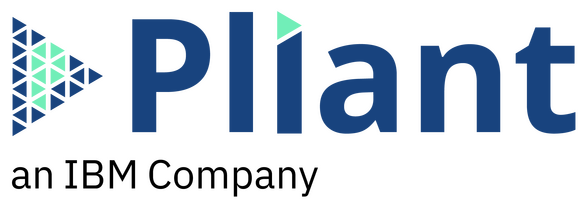Originally published on telecomnewsroom
Telecom Newsroom interview with Dave Hegenbarth, VP of Systems Engineering for Pliant
Dave Hegenbarth is Vice President of Systems Engineering for Pliant, a company that helps IT teams automate faster and with less effort by transforming tens of thousands of API calls into uniform, reusable building blocks. Pliant believes moving at the speed of digital business requires a fundamental change in how IT organizations deploy and manage technology. The company’s unified platform for infrastructure automation simplifies and accelerates how IT Ops teams can quickly develop and deploy workflow automation in response to the demands of complex IT processes.
With more than 25 years of technology experience, Hegenbarth brings unique perspectives on how to remain agile and adapt to ever-changing technology advancements. He has worked for large publicly traded companies such as Cisco Systems and Riverbed, as well as early-stage start-ups like SevOne, helping to design and deliver advanced technology solutions.
Telecom Newsroom recently chatted to Hegenbarth to discuss changes following the pandemic, enterprise considerations, the upcoming ONUG Digital Live Fall event and more.
Telecom Newsroom, Question (TNR-Q): Tell us more about what Pliant does. How does the company deliver value to customers?
Dave Hegenbarth, Pliant, Answer (DH-A): Pliant is a low-code infrastructure automation platform that allows IT Ops to plan, develop, and deploy automation at the API level in minutes.
TNR-Q: What is the one thing that differentiates Pliant within the industry?
DH-A: We are a true low-code solution that provides action blocks for 100s of thousands of API calls from 70+ vendors. These action blocks allow companies to write consistent and meaningful API level automation in minutes!
TNR-Q: In light of the COVID-19 global pandemic, what advice do you want to give to enterprise networks for consideration today or in the future?
DH-A: Enterprise networks need to be agile and able to shift where workers are located on a dime. Having the ability to support a fully remote workforce, as well as an in-person one, will be a requirement for enterprises moving forward. Network designs should capture this requirement as it will continue to be prevalent in the years to come.
TNR-Q: What is Pliant’s position on hybrid multi-cloud deployments for the enterprise?
DH-A: We see more and more companies starting to look at multi-cloud deployments. What we have found interesting is, in some cases, these clouds are on-premises and “in the cloud,” allowing customers to move workloads between the two depending on what the business use case is. This seemed to have accelerated with the COVID-19 pandemic.
TNR-Q: How do you define digital transformation and what is Pliant doing to help enterprise businesses adapt more effectively?
DH-A: For every company it is different. We view digital transformation as a journey that helps accelerate the speed at which a company does business. When legacy processes or tasks become automated, that will be the accelerant for businesses to unlock their full potential.
TNR-Q: What is one of the biggest challenges of enterprise digital transformation and how should it be addressed?
DH-A: Legacy processes and technical debt need to be challenged and addressed if companies want to become customer-driven and digital-first organizations.
TNR-Q: What is the one thing that enterprise companies need to be aware of as they embrace hybrid multi-cloud computing?
DH-A: Enterprises need to look at how they will manage their cloud deployments operationally and economically. The latter will likely drive the former as companies continue to oversee their cloud spending. Having the ability to operate the multiple cloud platforms from a single pane of glass will be crucial to their success.
TNR-Q: Based on your experience and industry knowledge, what are you seeing enterprise businesses doing with technology that is a ‘waste of time?’
DH-A: We see businesses continuing to blindly invest in tools that serve a single purpose or automation that solves a single use case or performs a single task. We do believe automation can help accelerate companies’ digital transformation journey. However, there needs to be an overall plan for how and where all automation runs from and to in order to get the enterprise to a place where they are doing business faster while driving customer satisfaction scores up.
TNR-Q: What is the most important driver of change taking shape today?
DH-A: Companies are being forced to adapt faster than they thought they would have to. This is forcing old habits and methodologies out and welcoming new opportunities for companies to partner with cloud and digital-first enablers that will help differentiate their offerings in this on-demand environment.
TNR-Q: What products or services are you most excited to share with the enterprise community at the ONUG Digital Live Fall event?
DH-A: We are excited to share several new customer stories, integrations with existing automation tools and new vendors, our ROI dashboard, and our graphical UI workflow editor at this year’s event.
TNR-Q: Thanks so much for your time. To learn more about Pliant, please visit www.pliant.io.
